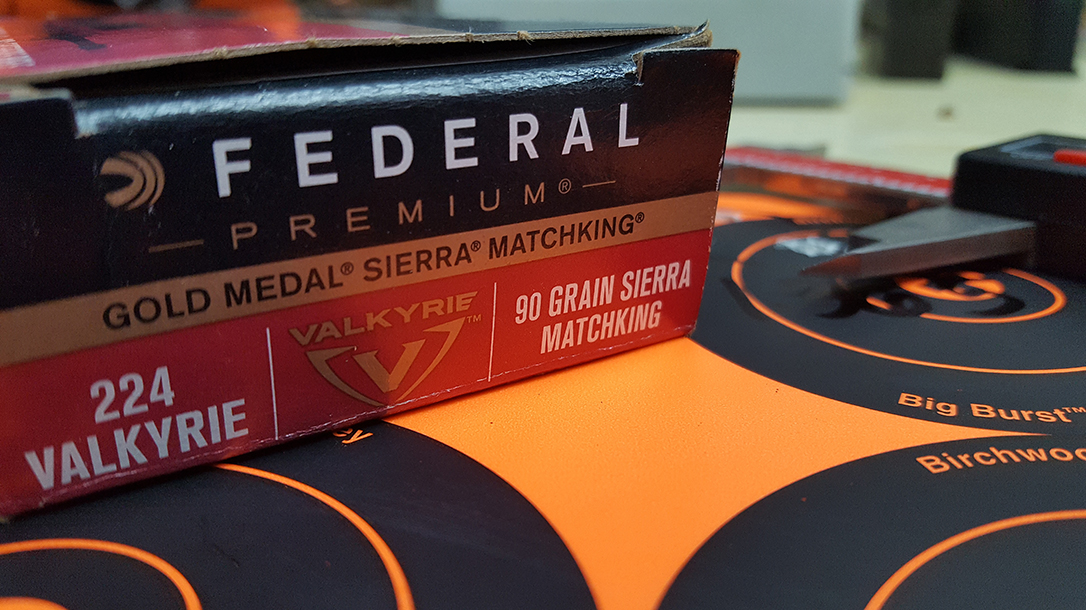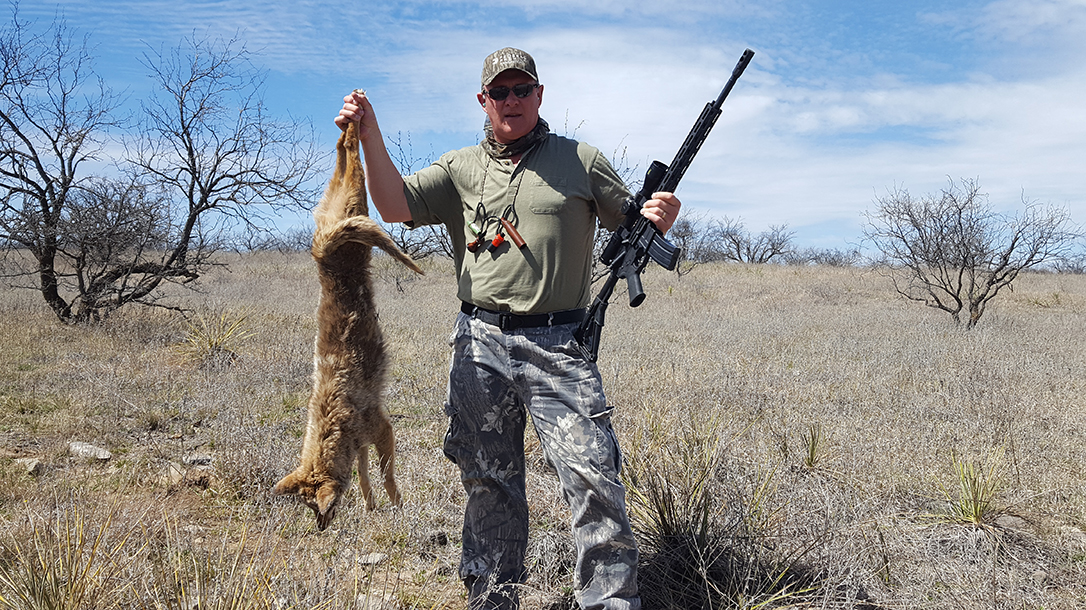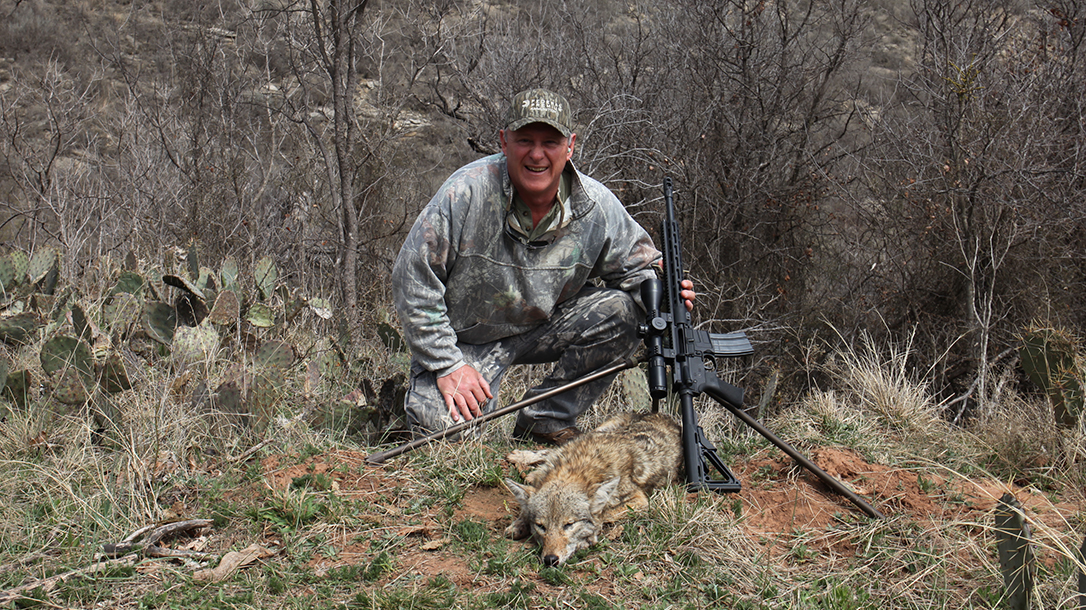Whenever someone introduces a new cartridge into the marketplace, like the .224 Valkyrie, it typically gets a lot of press and attention. In the beginning a lot of what you hear and read sounds pretty much the same and is generally favorable. Along the way, the gun-Internet trolls crawled out of the dark and spewed their generally unsubstantiated bile on the subject at hand. Somewhere between the marketing hype and negative trolling lies the truth.
Giving an honest evaluation of the .224 Valkyrie pushed this writer to hold fire until some of the dust settled, and share some unbiased, first-hand experience.
Looking at the 224 Valkyrie With Some Savages
I finally got my hands on a Savage MSR chambered in .224 Valkyrie in late March 2018 during a hunt on the Clear Fork Ranch near Albany, Texas. During the day, we spent time on the range, cruising ranch roads in search of plentiful porkers or stopping to call in coyotes.
Advertisement — Continue Reading Below
The second morning of the hunt, I geared up with an MSR15 in .224 Valkyrie and spent much of the day cruising ranch roads for coyotes. Mike Mattly, with Back40 PR, and I took turns calling coyotes as we covered thousands of acres of mesquite and hardscrabble ranch land. We were also joined by Savage’s Chief of Engineering Chris Bezzina, who shared some of his insights on the .224 Valkyrie.
Not far from the ranch headquarters, we spied a group of hogs from a high bluff. We got set up for a shot, but the moving band of hogs never presented a shot. Later, glassing back down river, we found a coyote hunting along the river bank below. The distance was more than 300 yards, and at a steep angle. I waited until the ‘yote turned its body to face directly away. Then I took advantage of the greater vital area along its spine. I put the crosshairs on the coyote’s skull and the bullet dropped enough to take out its spine and lungs. We continued our hunt and kept stacking up coyotes and hogs in the back of the truck. The Valkyrie doing a good job of anchoring its quarry.
Rumors of .224 Valkyrie Problems
After my experience with the .224 Valkyrie, word started going around the industry that the new cartridge was having problems. A letter from Federal President Jason Vanderbrink spoke to the accuracy issues. “As with any product innovation that pushes performance boundaries, there are often adjustments that need to be made to the offering to continually improve. We have found that some of our Sierra 90-grain MatchKing rounds are not performing to the accuracy levels we expect. Although they are still shooting MOA out of our test barrels and will function to our specifications, we hold our Premium Gold Medal products to the highest standard. As a result, we are recommending the following products as we work to improve the MatchKing load …”
Advertisement — Continue Reading Below

In response to what shooters were finding, and in response to Federal’s “official” comments, Sierra came with a statement. “The Bulletsmiths at Sierra Bullets typically recommend a 6.5-inch twist barrel for the #9290 22 cal 90 gr HPBT bullet. However, for cartridges like the .224 Valkyrie that can push them over 2,650 fps muzzle velocity, a 7-inch twist barrel will stabilize the bullet correctly.”
All About the Twist
While Federal was having ammo issues with the Valkyrie, gun makers were having their own issues, too. Retired Army sniper James Gilliland was involved in the pre-production testing of the Valkyrie. So, I asked his perspective on the issues.
Advertisement — Continue Reading Below
“Tons of people are balking, saying that a 7 twist isn’t right,” Gilliland said. “You’ve got to shoot the 90 SMKs fast. Early 90-grain Sierra Match King bullets were really thin jacketed. Made to shoot out of an AR15 by the AMU out to 1,000 yards. They were separating, causing the bullet to yaw.”
Launch velocity is critical to accuracy with the Valkyrie’s long projectiles, like the 90-grain Sierra Match King. In fact, the Valkyrie “loses a lot between 18 and 20 inches of barrel length,” Gilliland added. This writer has found that the 90-grain bullet in question averages less than 2,550 fps; that’s from an 18-inch Savage MSR barrel. This is well below the 2,650 muzzle velocity that Sierra recommends for the Valkyrie.
Variations in Chamber and Twist
Further complicating the first year of the Valkyrie’s existence was the variation in chamber reamers and barrel twist rates. “Everybody thought they were smarter than everybody else,” Gilliland said about many of the rifle makers who weren’t producing rifles with SAAMI standard chambers.
Advertisement — Continue Reading Below

“I heard that some reamers were out of spec, and had too much freebore,” Gilliland said. “Instead of buying quality products, like JPs, people started buying $200 cheap barrels. Federal did a really great job of marketing and everybody was expecting it to be the greatest thing.”
Additionally, Federal’s Engineer Jake Burns recommends a 0.050 freebore with a 1.5-degree lead.
Advertisement — Continue Reading Below
“Essentially, they took the smallest bullet they (Federal) knew they wanted to use and loaded it to the length they wanted and then they took the largest bullet and loaded it and then they took the best average of all the jumps and used that so it would work with everything they wanted to load,” Gilliland said in a recent Federal video.
In the intervening seven months between the hunt and when a Savage MSR test rifle finally arrived, I got my hands on a couple .224 Valkyrie setups. They had varying barrel lengths to sort out some of what I’d been hearing about performance issues.
Adding up the positives and the negatives surrounding the .224 Valkyrie, I’m still a big fan. Shooting the heaviest bullets, I’m getting sub-MOA groups from rifles with barrels 20 inches and greater. Using longer barrels, the long-range performance lives up to initial promises.
Advertisement — Continue Reading Below























